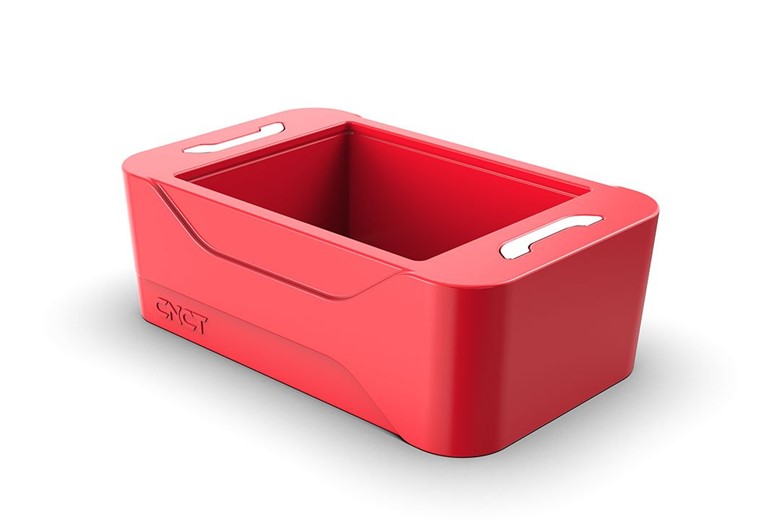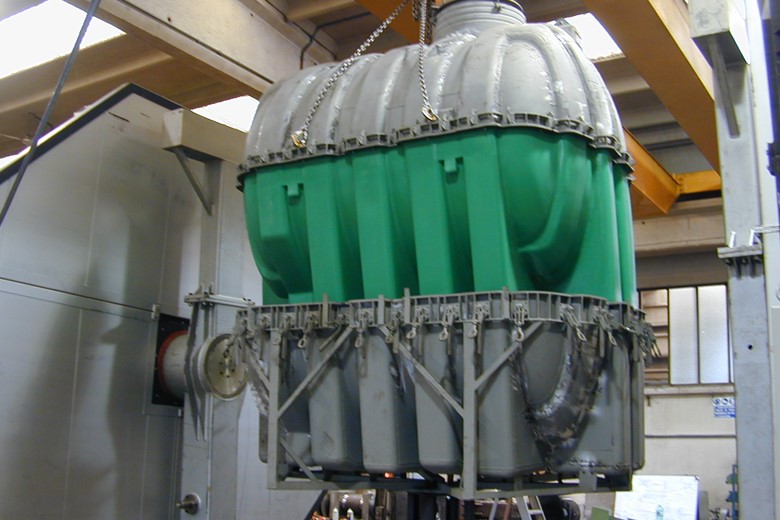If you’re looking for rotomolding help for inventors, you’re at the right place. Rotomolding is short for rotational molding. It’s a thermoplastic manufacturing process that normally involves enclosing powdered plastic into a heated metal mold (tooling) and rotating the mold to form a one-piece hollow plastic product. It’s a great, cost-effective way of producing simple or complex plastic parts, especially because of the minimal amount of materials wasted in this process.
Rotomolding
- Material: Polymers, primarily plastic.
- Purpose: Creating one-piece hollow plastic parts and/or products.
Advantages of Rotomolding
Using our client’s CNCT, a custom-made premium cooler designed for Tesla vehicles, we’re going to provide rotomolding help for inventors and show you why this process might be the right choice to bring your great idea to life.

Strength, Durability, and Uniformity
The second you grip the handles or run your hand over the top of the CNCT, you can feel that it’s a strong piece of equipment. That’s thanks to the rotational process of rotomolding – it’ helps inventors create thick, seamless, and uniform walls. This is especially important in the corners of your hollowed-out part or product as that’s where stress occurs the most. Because the part or product is created as a single piece, no additional joining parts or processes are required. Joining processes such as welding may lead to stress or weak points where the seam is located. A uniform, thicker and seamless corner will help absorb shocks and stress. It’s an important feature for products that you’re always taking on the go – like the CNCT.
Efficient, Affordable, and Customizable
In general, rotomolding requires less and low-cost tooling. As a result, rotomolding is great for inventors, startups, and small businesses who need help producing low volumes quickly. The mold itself can be made from steel, but you also can go with other metals such as aluminum alloys, which are much more cost-effective. Inventors also have the option of using foaming to create insulation and stiffness. The CNCT uses 2 lbs of commercial-grade, rigid density closed-cell polyurethane foam insulation in the wall and lid. These materials help keep your contents fresh and ice-cold for up to two days.
Aesthetics
Circling back to the topic of tooling, when using softer metals for the mold, rotomolding helps inventors imprint detailed textures, logos, or other graphics to add a layer of depth to your product. Most notably on the long side of the CNCT, there’s a layer of depth w that matches the smooth curves of Tesla vehicles. In addition, the bold, molded-in CNCT logo in the bottom right punctuates the design and ties everything together.

How Rotomolding Works
- Measure/weigh the polymer, often powdered plastic, and place the powder within the metal mold.
- Tightly close the mold on both ends to ensure none of the polymer leaks during the rotational process. One shut, the mold is transferred to an oven.
- Rotate and heat the mold on both the x-axis (rotating the mold vertically) and the y-axis (rotating the mold horizontally). The heat is what melts the polymer and makes it adhere to the walls of the mold. The rotations are what ensures the even distribution of the melted polymer resulting in uniform walls.
- While rotating, cool the melted polymer until hardened into the intended shape.
- Remove the cooled and hardened product from the mold.
About: MAKO Design + Invent is the original firm providing world-class consumer product development services tailored to startups, small manufacturers, and inventors. Simply put, we are the leading one-stop-shop for developing your physical product from idea to store shelves, all in a high-quality, cost-effective, and timely manner. We operate as one powerhouse 30-person product design team spread across 4 offices to serve you (Austin, Miami, San Francisco, & Toronto). We have full-stack in-house industrial design, mechanical engineering, electrical engineering, patent referral, prototyping, and manufacturing services. To assist our startup and inventor clients, in addition to above, we help with business strategy, product strategy, marketing, and sales/distribution for all consumer product categories. Also, our founder Kevin Mako hosts The Product Startup Podcast, the industry's leading hardware podcast. Check it out for tips, interviews, and best practices for hardware startups, inventors, and product developers. Click HERE to learn more about MAKO Design + Invent!







